Affiliate links on Android Authority may earn us a commission. Learn more.
The rise and fall of Sony Mobile: where next?
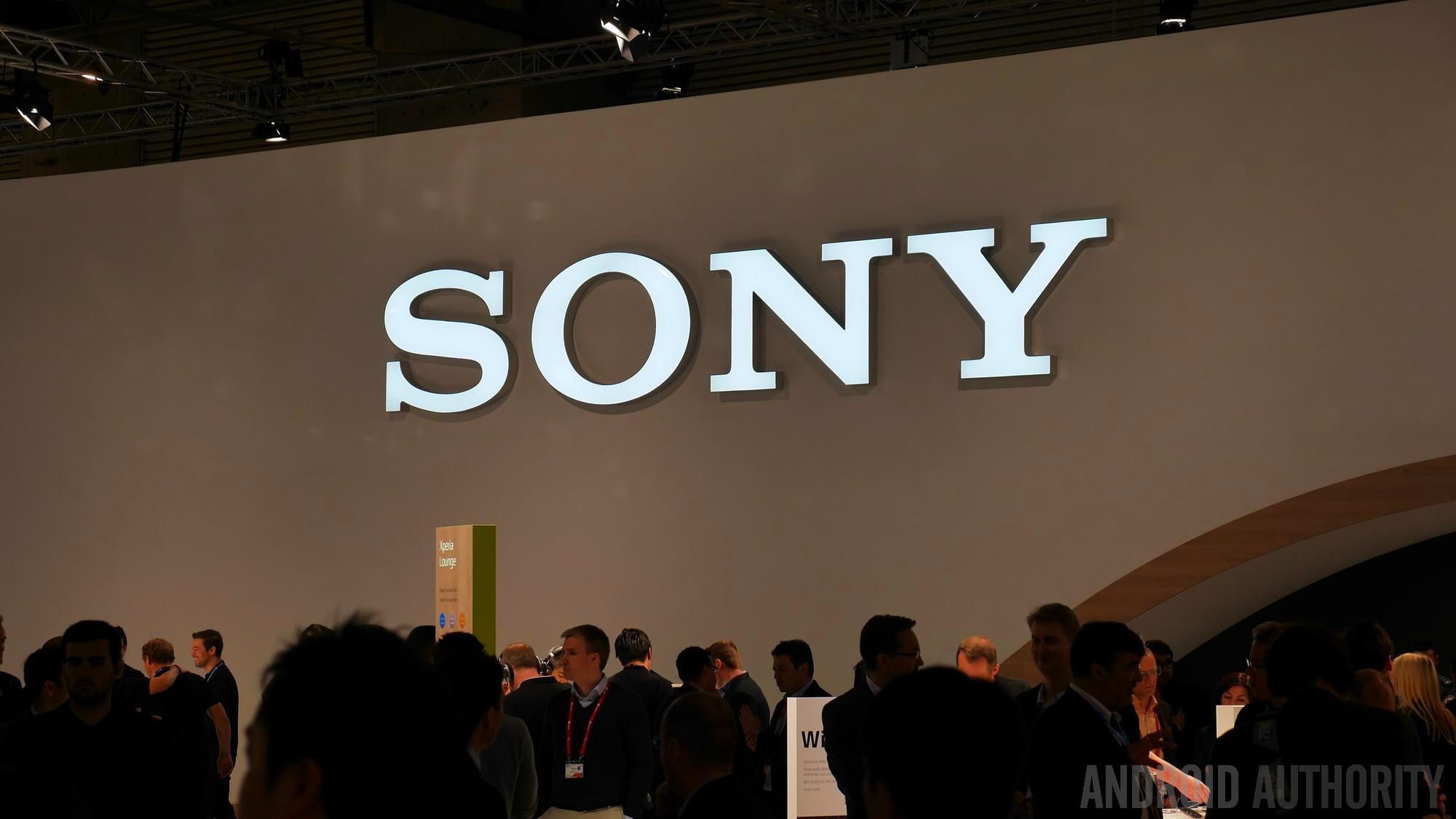
Sony Mobile may have only broke through into the phone market shortly after the turn of the century, but the Japanese manufacturer quickly rose to the top with products that redefined the way we use our smartphones.
An early period of innovation thrust the company into the limelight as it offered a credible alternative to handsets from then-leaders RIM, Nokia and Motorola. However, like many of the OEMs of that era, the company failed to respond to the threat from the Apple iPhone when it launched in 2007, and it has now become a bit-part player in the ever-competitive mobile industry.
Many of the giants from that era have now sold up and moved to pastures new, but Sony retains the fight with its current range of Xperia handsets. With many signs that the company is failing to innovate again and is headed sharply towards the pits, how can the company stave off what currently seems like almost inevitable death?
The Sony Ericsson years
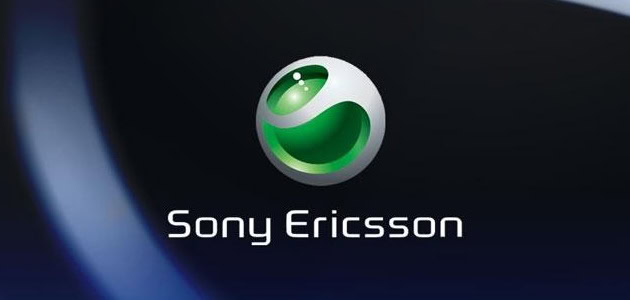
Before looking to the future, we need to consider the company’s past, and it all begins with a joint venture between Sony Mobile of Japan and Sweden’s Ericsson to create the smartphone that, in 2001, arguably defined the brand from its introduction: the Sony Ericsson T68i.
Running on a proprietary OS, the T68i brought brilliant design and offered curved edges, a joystick in place of navigation buttons, and a 256 color display that set a benchmark for mobile phones. In an era when phones were boring and dull, the T68i shone through and at a cost of $650 at launch, it was very expensive. Despite this, many bought one and I remember the thrill mine gave me that arguably hasn’t been replicated since mobile phones became smart commodities.
Fast forward a year, phones were getting bigger and the concept of premium phone was born. The Sony Ericsson T610 combined a black and silver color scheme, a joystick and a 65,000 color display with 128×160 pixels resolution. The premium design was the biggest selling point and the mind-boggling display again advanced the benchmark by which other phones were defined.
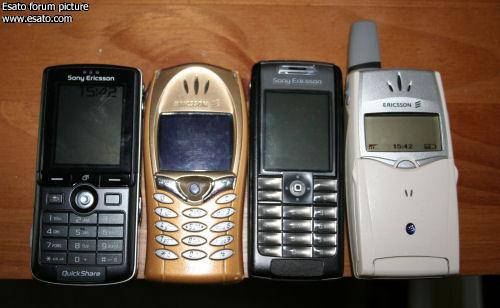
From the T Series, to the K series, and the peak (and then decline) of Sony’s mobile ambitions. I remember selling the first handset, the K750i, in significant volume whilst working for a major UK retailer in 2005 and this is the handset that many would call Sony’s golden egg.
The K750i’s 2MP camera ushered in the camera spec war – that still continues today – and the handset also bought a music player and expandable storage. It wasn’t all great, as it required proprietary expandable storage and used Sony’s odd Fast Port headphone jack as opposed to the 3.5mm that devices use today. The K750i was certainly a handset that was a joy to use and with MMS slowly beginning to encourage picture sharing, the camera was perfect.
The K750i camera would also see Sony focus on particular features and the result was the K800i (also known as the K790i) which is widely regarded as Sony Ericsson’s most successful mobile phone. The handset brought the Cybershot brand from Sony’s cameras to Sony Ericsson phones and the candy-bar design was a throw to the style of future mobile phones. The 3.2MP camera further grayed the line between phones and cameras while the 2-inch QVGA display was a sign of bigger displays to come.
I remember the K800i well and actually remember selling a lot of these handsets until January 2007 when Apple redefined the industry. The K800i will always be a handset that’s remembered for making the average customer realize that mobile phones could take as good pictures as the point-and-shoot cameras of the day, but like many other devices, it never got a look in once Apple introduced the iPhone.
The iPhone effect
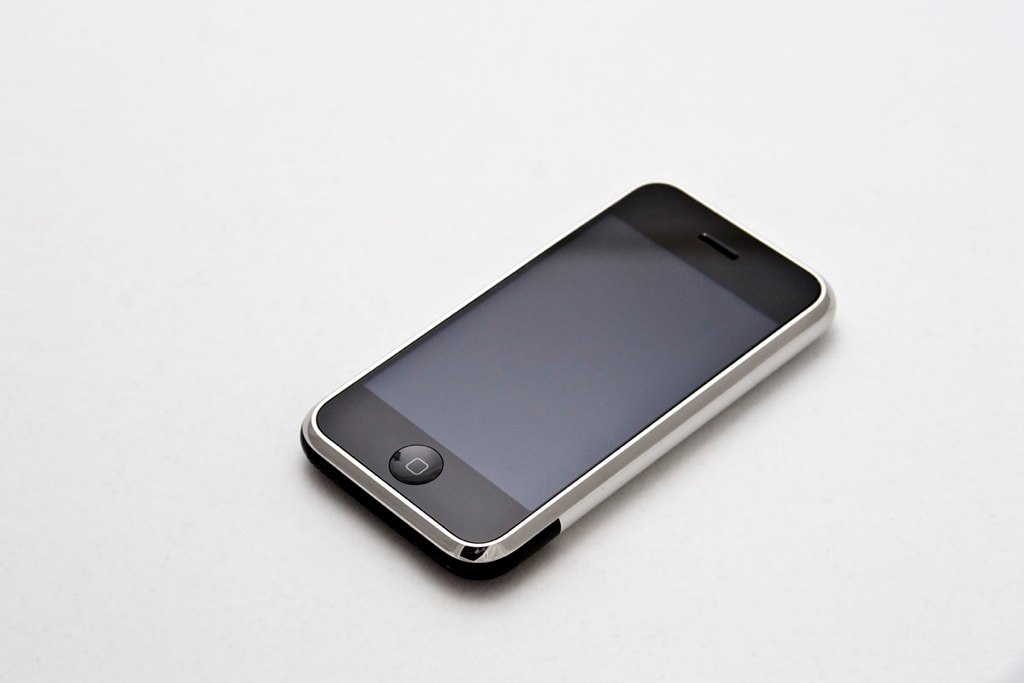
Like Motorola, BlackBerry – who was known as RIM BlackBerry, before dropping RIM from its name – and Nokia – who sold its mobile phone division to Microsoft and then announced a new Android-based tablet – Sony Ericsson completely failed to recognize the threat of the iPhone.
Apple’s first handset may not have done a lot but it brought something completely different; capacitive touch screens. Until the iPhone, the few touchscreen devices had used resistive touchscreens, which responded to pressure but the capacitive display on the iPhone responded to touch.
[related_videos title=”iPhone in video:” align=”center” type=”custom” videos=”604644,587192,591297,527664″]
As a result, the concept of an all-touchscreen device completely transformed customer expectations from a mobile phone and Sony Ericsson tried but failed to produce handsets that could actually challenge the iPhone. The key thing that Apple had was its iPhone OS (now known as iOS) which was designed for touchscreens, while Sony Ericsson – like Nokia –t ried and failed to repurpose the Symbian UI for use with touch displays.
2008 saw LG overtake Sony Ericsson, and the beginnings of a profit warning era, with profits of €1.125 billion in 2007 dropping to a loss of nearly €800 million in 2009. The decline was short, sharp and very bitter, but six years later, the company is still in operation so how did they recover?
An Xperia generation
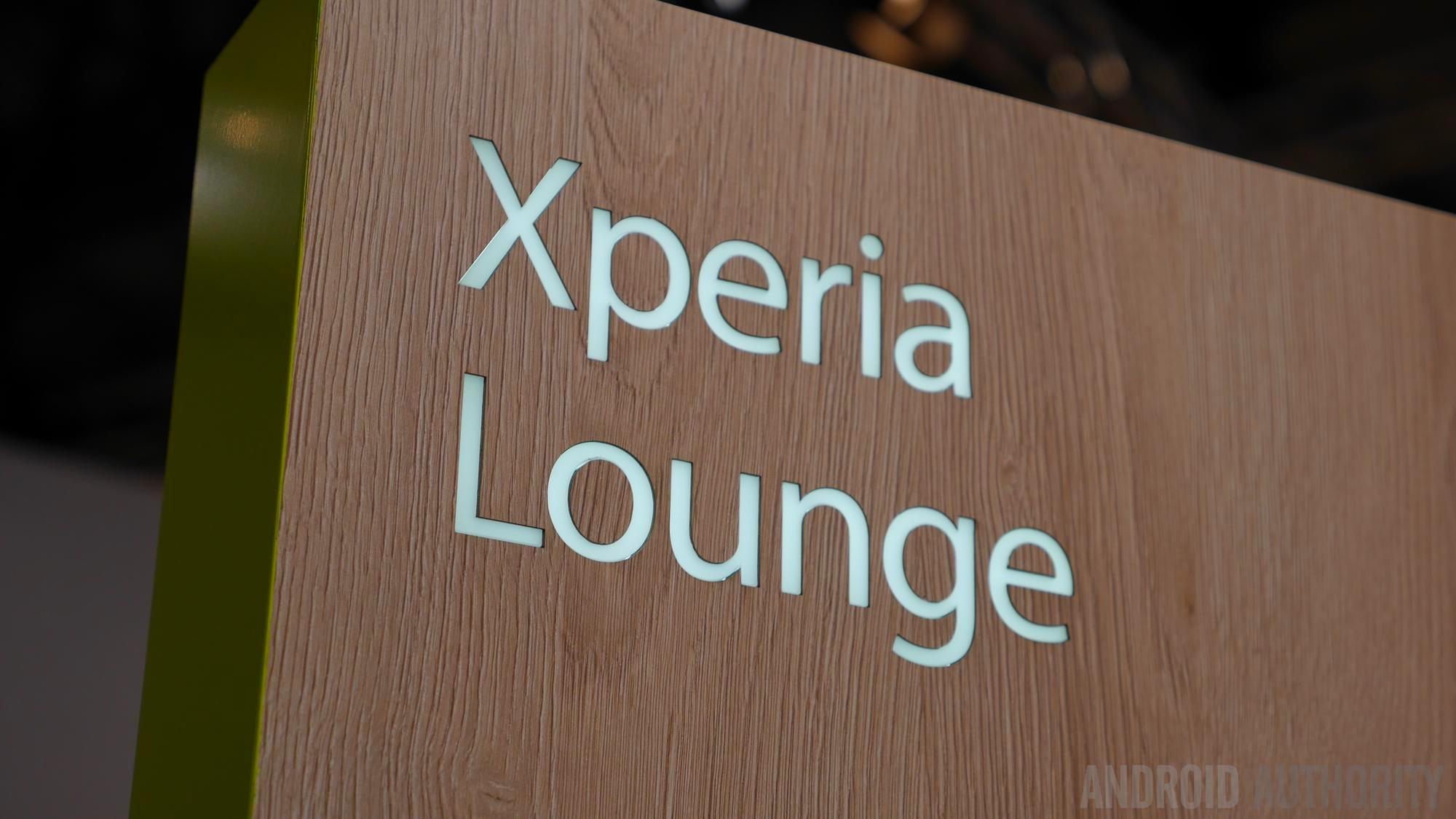
Post iPhone launch, Sony Ericsson first backed Symbian as its platform of choice, then Windows Mobile and Android, as the battle for mobile supremacy expanded into the smartphone arena. While transitioning towards smartphones, the company still produced feature phones such as the W995 in 2009 – which had the world’s first 8-megapixel camera and was part of the Walkman-focused W series – and the Symbian-based P series, which ran Symbian and offered PDA-like features.
The key change in Sony’s fortunes came from the decision of Sony Mobile to buy out partner Ericsson and make Sony Ericsson its wholly-owned subsidiary. Announced in October 2011, Sony completed the buyout the following February, and Sony Mobile Communications was born. With the buyout, the company underwent a massive restructuring and transformation.
Prior to the buyout, Sony Ericsson had produced two smart devices which aimed to offer the best of its PDA and camera phones in a single device. Both ran on Microsoft’s Windows Mobile platform and came at an era where the entire market was questioning whether there was a demand and need for physical keyboards on mobile phones.
Of the two devices, the Xperia X1 was by far my favourite, and, although it was bereft with hardware issues and buggy software, I owned more than ten of these devices. The X1 had a unique curved slide-out full QWERTY keyboard, large touchscreen and a stylus and, while its successor the Xperia X2 fared a little better, these were Sony’s arguably most innovative smartphones.
In 2010, the company announced its first Android smartphone, the Xperia X10, which had a certain style and design that’s familiar even today. This was followed by handsets like the Xperia X10 mini pro – its first Android QWERTY sliderj, the Xperia Arc – which combined a stunning camera with impeccable design, the Xperia Ray and lastly, the Xperia Play – which had a slide-out PlayStation controller and is arguably the founding handset of the now defunct PlayStation-certified series.
Following the buyout and the birth of Sony Mobile Communication, Sony focused on Android, which was on a rapid rise towards supremacy. The Xperia S was announced in February 2012 and bought large internal storage (32GB), a 4.3-inch HD display and a 12MP rear camera that would appear on many devices going forward. This was followed by flagship handsets such as the Xperia Ion and Xperia Acro as well as lower-handsets such as the Xperia P and Xperia U as the Xperia brand encompassed Sony’s entire smartphone portfolio.
The announcement of the Xperia Z in 2013 saw the introduction of Sony’s current flagship smartphone range and the birth of iterative upgrades, a strategy that ultimately failed to capture the market. The table below shows the different flagship Xperia Z devices and how they compare:
| Detail | Xperia Z | Xperia Z1 | Xperia Z2 | Xperia Z3 | Xperia Z3+ |
|---|---|---|---|---|---|
| Detail | Xperia Z | Xperia Z1 | Xperia Z2 | Xperia Z3 | Xperia Z3+ |
| DetailXperia ZXperia Z1Xperia Z2Xperia Z3Xperia Z3+ Device: | |||||
| Detail Display Size: | Xperia Z 5.0 inch TFT | Xperia Z1 5.0 inch TFT | Xperia Z2 5.2 inch IPS | Xperia Z3 5.2 inch IPS | Xperia Z3+ 5.2 inch IPS |
| Detail Display Resolution: | Xperia Z Full HD (1080x1920) | Xperia Z1 Full HD (1080x1920) | Xperia Z2 Full HD (1080x1920) | Xperia Z3 Full HD (1080x1920) | Xperia Z3+ Full HD (1080x1920) |
| Detail Display Density: | Xperia Z 441ppi | Xperia Z1 441ppi | Xperia Z2 424ppi | Xperia Z3 424ppi | Xperia Z3+ 424ppi |
| Detail Processor: | Xperia Z quad-core Snapdragon S4 Pro 4 x 1.5GHz | Xperia Z1 quad-core Snapdragon 800 4 x 2.2GHz | Xperia Z2 quad-core Snapdragon 801 4 x 2.3GHz | Xperia Z3 quad-core Snapdragon 801 4 x 2.5GHz | Xperia Z3+ octa-core Snapdragon 810 4 x 2.0GHz, 4 x 1.5GHz |
| Detail Storage: | Xperia Z 16GB | Xperia Z1 16GB | Xperia Z2 16GB | Xperia Z3 16GB/32GB | Xperia Z3+ 32GB |
| Detail Expandable storage? | Xperia Z microSD, up to 64GB | Xperia Z1 microSD, up to 64GB | Xperia Z2 microSD, up to 128GB | Xperia Z3 microSD, up to 128GB | Xperia Z3+ microSD, up to 128GB |
| Detail RAM: | Xperia Z 2GB | Xperia Z1 2GB | Xperia Z2 3GB | Xperia Z3 3GB | Xperia Z3+ 3GB |
| Detail LTE: | Xperia Z Cat 3 (100Mbps DL, 50Mbps UL) | Xperia Z1 Cat 4 (150Mbps DL, 50Mbps UL) | Xperia Z2 Cat 4 (150Mbps DL, 50Mbps UL) | Xperia Z3 Cat 4 (150Mbps DL, 50Mbps UL) | Xperia Z3+ Cat 6 (300Mbps DL, 50Mbps UL) |
| Detail First OS: | Xperia Z Android 4.1.2 | Xperia Z1 Android 4.2 | Xperia Z2 Android 4.4.2 | Xperia Z3 Android 4.4.4 | Xperia Z3+ Android 5.0 |
| Detail IP dust/water rating | Xperia Z IP57 water resistance up to 1 meter and 30 minutes | Xperia Z1 IP58 water resistance up to 1.5 meters and 30 minutes | Xperia Z2 IP58 water resistance up to 1.5 meters and 30 minutes | Xperia Z3 IP68 water resistance up to 1 meter and 30 minutes | Xperia Z3+ IP68 water resistance up to 1.5 meters and 30 minutes |
| Detail | Xperia Z | Xperia Z1 | Xperia Z2 | Xperia Z3 | Xperia Z3+ |
| DetailXperia ZXperia Z1Xperia Z2Xperia Z3Xperia Z3+ Camera: | |||||
| Detail Sensor size: | Xperia Z 13.1MP | Xperia Z1 20.7MP | Xperia Z2 20.7MP | Xperia Z3 20.7MP | Xperia Z3+ 20.7MP |
| Detail Video recording (1080p): | Xperia Z 30fps | Xperia Z1 30fps | Xperia Z2 60fps | Xperia Z3 60fps | Xperia Z3+ 60fps |
| Detail Video Recording (4K/2160p): | Xperia Z None | Xperia Z1 None | Xperia Z2 30fps | Xperia Z3 30fps | Xperia Z3+ 30fps |
| Detail Front camera: | Xperia Z 2.2MP, 1080p@30fps | Xperia Z1 2MP, 1080p@30fps | Xperia Z2 2.2MP, 1080p@30fps | Xperia Z3 2.2MP, 1080p@30fps | Xperia Z3+ 5.1MP, 1080p@30fps |
| Detail Flash | Xperia Z single-LED | Xperia Z1 single-LED | Xperia Z2 single-LED | Xperia Z3 single-LED | Xperia Z3+ single-LED |
| Detail | Xperia Z | Xperia Z1 | Xperia Z2 | Xperia Z3 | Xperia Z3+ |
| DetailXperia ZXperia Z1Xperia Z2Xperia Z3Xperia Z3+ Battery: | |||||
| Detail Capacity: | Xperia Z 2330 mAh | Xperia Z1 3000 mAh | Xperia Z2 3200 mAh | Xperia Z3 3100 mAh | Xperia Z3+ 2930 mAh |
| Detail Removable Battery? | Xperia Z No | Xperia Z1 No | Xperia Z2 No | Xperia Z3 No | Xperia Z3+ No |
| Detail Fast Charging? | Xperia Z No | Xperia Z1 No | Xperia Z2 60% in 30 mins Quick Charge 2.0 | Xperia Z3 60% in 30 mins Quick Charge 2.0 | Xperia Z3+ 60% in 30 mins Quick Charge 2.0 |
| Detail | Xperia Z | Xperia Z1 | Xperia Z2 | Xperia Z3 | Xperia Z3+ |
On paper, the Xperia Z was revolutionary, but in the hand, it was very much a case of numbers can be deceiving. Sony followed this up with several handsets and while there have been some improvements in display type and camera, the series has become synonymous with evolution, over revolution. The Xperia Z range has also given birth to other handsets and Sony’s push into multiple sizes; the Xperia Z Ultra was a larger-than-life phablet that let you use a normal pen or pencil on the display, while the Xperia Z3 Compact is arguably the best handset produced by Sony Mobile.
Yet here we are, eight years after the first iPhone was announced and despite plenty of new devices, and restructuring resulting in thousands of layoffs all around the world, Sony has failed to recapture its early magic. Like many others, the company has shown its not willing to risk on innovation and prefers to offer iterative updates, and this strategy is plainly not working.
How can Sony prevent a seemingly-inevitable demise, and is it time to change its Xperia Z strategy to refocus its efforts elsewhere?
Where does Sony Mobile go from here?
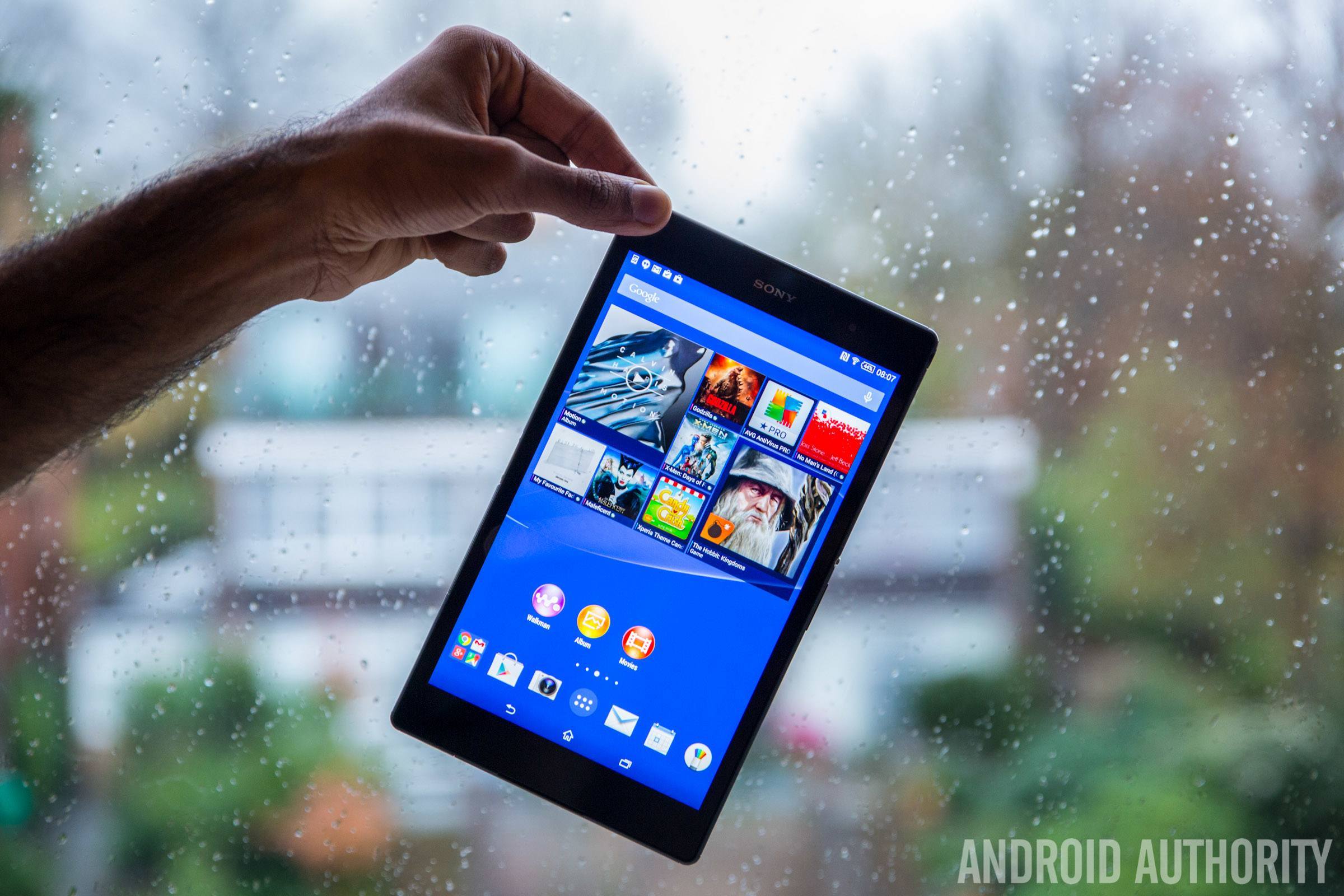
With the demise of Sony Ericsson behind it, Sony should have learnt from its mistakes. While the Japanese company has attempted to steady the ship, there seems to be very little resolve to challenge the status quo.
Sony has wisely integrated some of its non-mobile technologies, like the X-Reality Engine, BIONZ image processing unit, and Exmor-R sensor, into is smartphones, but this hasn’t been enough to stop the decline. While Sony was focusing on adapting its existing technology, its rivals have pushed on real innovation and left Sony behind.
Sony's partners get better images than Sony from the same sensor
The company may have camera knowledge, but strangely, its partners have had better luck with Sony camera sensors than it has itself. It’s rather ironic that Sony provides the camera sensors for lots of Samsung and Apple smartphones, yet its inferior processing results in worse images than its partners produce using the same camera module.
That being said, it’s not all bad for Sony as the company’s Omnibalance design and advanced water resistance do give it a couple of unique selling points. The key problem for the manufacturer is that it just doesn’t upgrade its smartphones enough between each release cycle. Let’s consider the Xperia Z2, the Xperia Z3 and the Xperia Z3+, and how little are the differences between each handset.
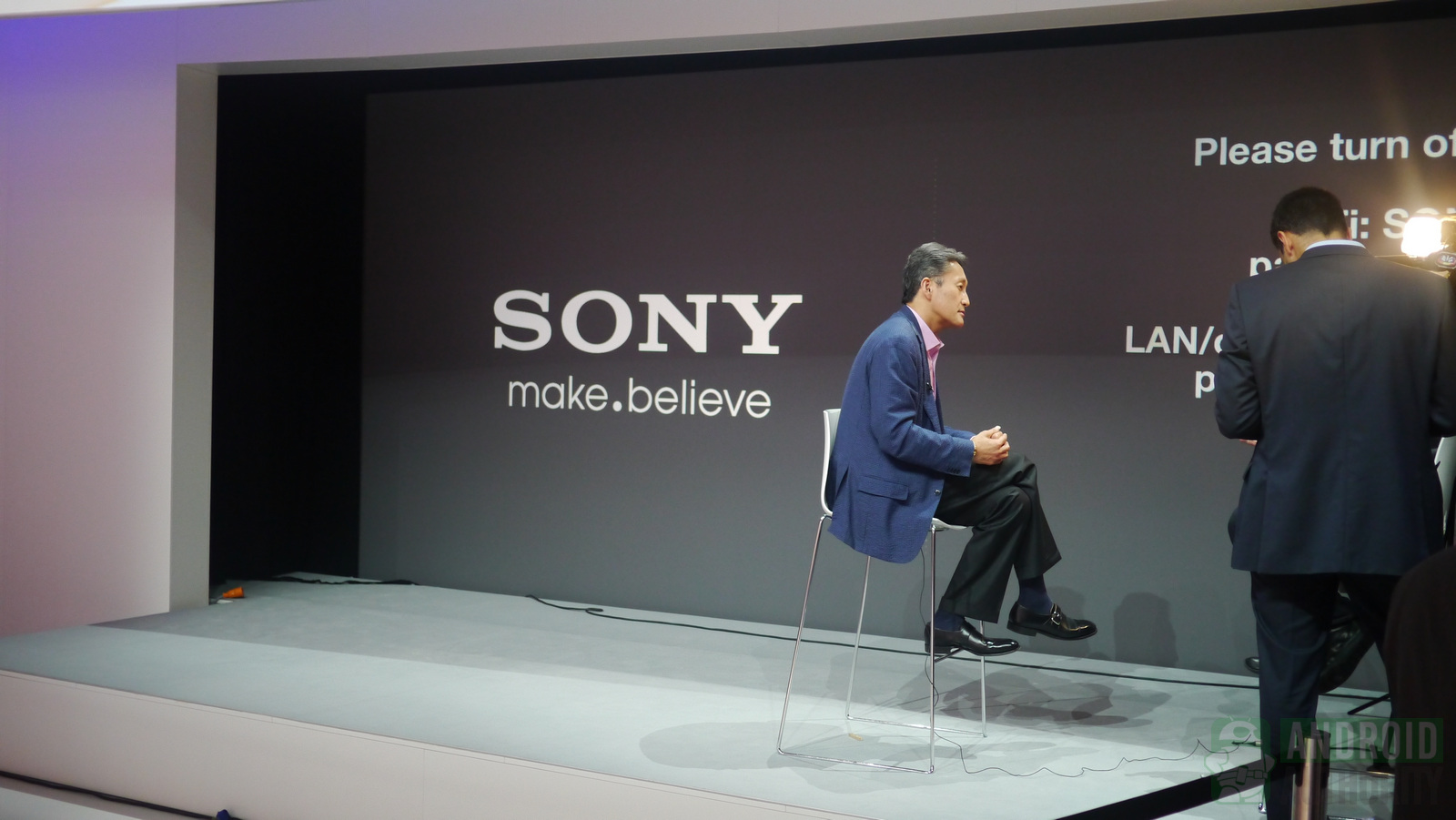
Going forward, there’s a few ways the company can remain relevant but the key is to change the release cycle. Sure there will always be a demand for newer handsets in its home country of Japan so Sony could keep its current cycle there (without giving each handset a new name in the Xperia Z range) but for other markets, Sony should stick to one flagship per year.
It’s not just slowing the release cadence; each handset needs to be different to the others, whether by improving the display, changing the design or meaningfully improving the camera. At the moment, it seems that Sony releases handsets for the sake of releasing handsets, but surely it’s time to refocus?
If just handset comparisons don’t make a compelling case enough, here’s Sony’s finances over the past ten years. Sony’s product strategy clearly hasn’t helped reverse the decline it has experienced since the iPhone was released:
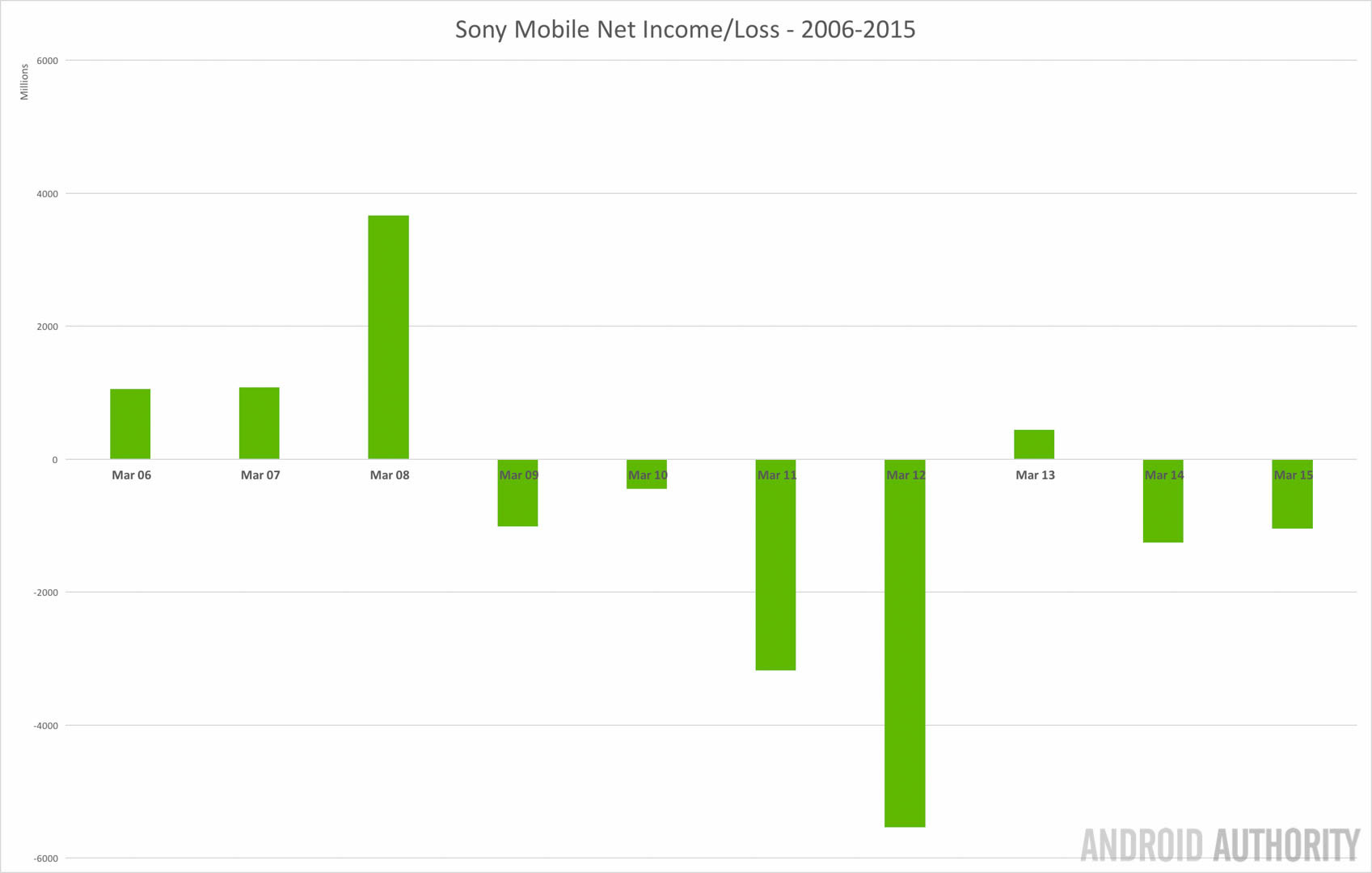
Android tablets have failed to dominate the tablet market in quite the same way their smartphone siblings have, yet the waterproof Xperia Z4 Tablet has market-leading specs and is designed for use in a spectrum of conditions from the dusty deserts of the Middle East to the rain-lashed monsoons of Asia and the unpredictable weather of Europe and the USA. Sony could easily make tablets its key focus going forward.
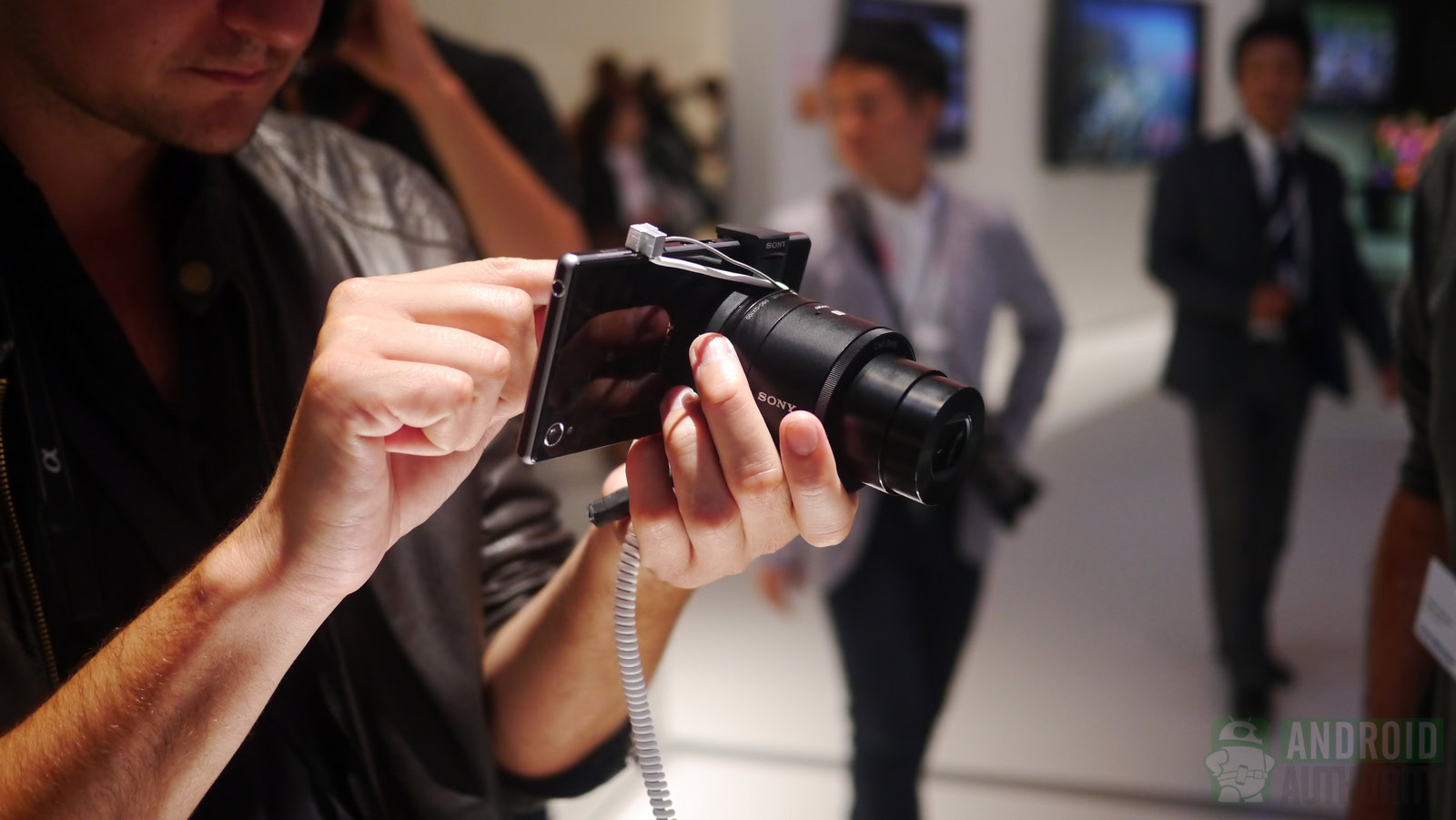
From tablets to smart cameras and the innovative QX10 and QX100 clip-on cameras that were announced at IFA 2013. Debuted alongside the Xperia Z2, these lenses acted as remote viewfinders and allowed you to capture images with optical zoom from your smartphone but failed to capture the market as intended. The QX-10 offered great quality point-and-shoot images while the QX-100 offered the manual controls that was missing from the QX-10, albeit with a much much larger price tag.
The QX-10 and QX-100 were joined by the second-generation QX1 and QX30, which bought upgrades that include 30x optical zoom and a mount for the E lenses used in Sony’s DSLR range. Could the QX series be Sony’s secret weapon to carve out its own little lucrative niche in the market? Now Nokia has sold its smartphone division to Microsoft, it’s unlikely we’ll see a successor to the 42MP-clad Nokia Lumia 1020 and maybe there’s an opportunity for Sony to rekindle the camera-magic of its past in a bid for its future.
Wearables is another area where Sony has a long pedigree, with the Sony Ericsson Live View wearable launching all the way back in 2005. One of the pioneers of the modern smartwatch, Sony adopted Google’s Android Wear operating system in the third generation of its SmartWatch range but with the Apple Watch now firmly entrenched on almost a million wrists, the real challenge is about to begin.
While Sony doesn’t have a lot of control over the Android Wear software its devices run on, the company can refocus its design efforts to achieve the premium look that the Apple Watch and certain Android Wear rivals – such as the HUAWEI Watch and LG G Watch R – have achieved. Our very own Bogdan Petrovan touched on this in our feature on where Sony went wrong earlier this year and said that Sony could become the Apple of Android by focusing on premium devices; just like Bogdan, I agree that its unlikely Sony will take this approach but it’s definitely something for Sony to consider.
Although the SmartWatch 3 is now available in metal, I would like to see Sony really challenge the concept of a smartwatch in its next generation with unique innovative design that’s the result of careful consideration for the end user. Whether its achieving the right balance between size and design to an impressive display or super-large battery, Sony’s next wearable needs to be different.
And there-in lies the word that defines Sony as we know it: an inability to be different. In an ever-growing saturated smartphone market, the company needs its devices to stand apart from the rest, and as good as they are, the Xperia Z range fails to do this. Let’s look at how the Xperia Z3+ fares against the best from Samsung, LG, HTC and Huawei:
| Detail | Sony Xperia Z3+ | HTC One M9 | Galaxy S6 | LG G4 |
|---|---|---|---|---|
| Detail | Sony Xperia Z3+ | HTC One M9 | Galaxy S6 | LG G4 |
| DetailSony Xperia Z3+HTC One M9Galaxy S6LG G4 Hardware: | ||||
| Detail Display Size: | Sony Xperia Z3+ 5.2 inch IPS | HTC One M9 5.0 inch Super LCD3 | Galaxy S6 5.1 inch Super AMOLED | LG G4 5.5 inch IPS |
| Detail Display Resolution: | Sony Xperia Z3+ Full HD (1080x1920) | HTC One M9 Full HD (1080x1920) | Galaxy S6 Quad HD (1440x2560) | LG G4 Quad HD (1440x2560) |
| Detail Display Density: | Sony Xperia Z3+ 424ppi | HTC One M9 441ppi | Galaxy S6 577ppi | LG G4 538ppi |
| Detail Processor: | Sony Xperia Z3+ octa-core Snapdragon 810 4 x 2GHz + 4 x 1.5GHz | HTC One M9 octa-core Snapdragon 810 4 x 2GHz + 4 x 1.5GHz | Galaxy S6 octa-core Exynos 7420 4 x 2.1GHz, 4 x 1.5GHz | LG G4 hexa-core Snapdragon 808 2 x 1.82GHz, 4 x 1.44GHz |
| Detail Storage: | Sony Xperia Z3+ 32GB | HTC One M9 32GB | Galaxy S6 32/64/128GB | LG G4 32GB |
| Detail Expandable storage? | Sony Xperia Z3+ microSD, up to 128GB | HTC One M9 microSD, up to 128GB | Galaxy S6 No | LG G4 microSD, up to 128GB |
| Detail RAM: | Sony Xperia Z3+ 3GB | HTC One M9 3GB | Galaxy S6 3GB | LG G4 3GB |
| Detail Build Type: | Sony Xperia Z3+ Glass | HTC One M9 Aluminium Unibody | Galaxy S6 Glass and metal | LG G4 Plastic front with Plastic or Leather rear |
| Detail LTE: | Sony Xperia Z3+ Cat 6 (300Mbps DL, 50Mbps UL) | HTC One M9 Cat 6 (300Mbps DL, 50Mbps UL) | Galaxy S6 Cat 6 (300Mbps DL, 50Mbps UL) | LG G4 Cat 6 (300Mbps DL, 50Mbps UL) |
| Detail Fingerprint Sensor: | Sony Xperia Z3+ No | HTC One M9 No | Galaxy S6 Yes Payments: Samsung Pay PayPal Certified | LG G4 No |
| Detail SIM card | Sony Xperia Z3+ Single SIM | HTC One M9 Single SIM | Galaxy S6 Single SIM | LG G4 Single SIM |
| Detail | Sony Xperia Z3+ | HTC One M9 | Galaxy S6 | LG G4 |
| DetailSony Xperia Z3+HTC One M9Galaxy S6LG G4 Software: | ||||
| Detail OS version: | Sony Xperia Z3+ Android 5.0 | HTC One M9 Android 5.0 | Galaxy S6 Android 5.0.2 | LG G4 Android 5.1 (Lollipop) |
| Detail User Interface: | Sony Xperia Z3+ Sony UI | HTC One M9 HTC Sense 7 | Galaxy S6 TouchWiz UI | LG G4 LG G UX 4.0 |
| Detail | Sony Xperia Z3+ | HTC One M9 | Galaxy S6 | LG G4 |
| DetailSony Xperia Z3+HTC One M9Galaxy S6LG G4 Camera: | ||||
| Detail Sensor size: | Sony Xperia Z3+ 20.7MP | HTC One M9 20MP | Galaxy S6 16MP | LG G4 16MP with color spectrum sensor |
| Detail Autofocus: | Sony Xperia Z3+ Yes | HTC One M9 Yes | Galaxy S6 Yes | LG G4 Laser |
| Detail Optical Image Stabilisation: | Sony Xperia Z3+ No | HTC One M9 No | Galaxy S6 Yes | LG G4 Yes |
| Detail Video recording (1080p): | Sony Xperia Z3+ 60fps | HTC One M9 60fps | Galaxy S6 60fps | LG G4 60fps |
| Detail Video Recording (4K/2160p): | Sony Xperia Z3+ 30fps | HTC One M9 30fps | Galaxy S6 30fps | LG G4 30fps |
| Detail Front camera: | Sony Xperia Z3+ 5.1MP, 1080p@30fps | HTC One M9 4MP Ultrapixel 1080p@30fps | Galaxy S6 5MP, 1440p@30fps | LG G4 8MP, 1080p@30fps |
| Detail Flash | Sony Xperia Z3+ LED flash | HTC One M9 dual-LED (dual tone) | Galaxy S6 LED flash | LG G4 LED flash |
| Detail | Sony Xperia Z3+ | HTC One M9 | Galaxy S6 | LG G4 |
| DetailSony Xperia Z3+HTC One M9Galaxy S6LG G4 Battery: | ||||
| Detail Capacity: | Sony Xperia Z3+ 2930 mAh | HTC One M9 2840 mAh | Galaxy S6 2550mAh | LG G4 3000 mAh |
| Detail Removable Battery? | Sony Xperia Z3+ No | HTC One M9 No | Galaxy S6 No | LG G4 Yes |
| Detail Fast Charging: | Sony Xperia Z3+ Quick Charge 2.0 60% in 30 mins | HTC One M9 Quick Charge 2.0 60% in 30 mins | Galaxy S6 Quick Charge 2.0 60% in 30 mins | LG G4 None |
| Detail Wireless Charging: | Sony Xperia Z3+ No | HTC One M9 No | Galaxy S6 Yes, PMA+Qi | LG G4 Optional |
| Detail | Sony Xperia Z3+ | HTC One M9 | Galaxy S6 | LG G4 |
To stave off the demise, Sony needs to rekindle the magic that made Sony Ericsson successful. It needs to be bold and daring.
If Sony can think outside the box and really be innovative in its next smartphone and wearables, there’s a lot of the hope for the company yet. However, a failure to differentiate against the Xperia Z3+ could mean the end of the company’s global smartphone aspirations. Sony is no longer one of the top 10 global smartphone manufacturers – a list that is dominated incidentally by no less than seven Chinese manufacturers – and without daring to be different and really challenge the status quo, the company has no chance.
Sony needs to dare to be different
If it wants to truly be different, why not finally deliver the metal-clad Xperia handset that should have been the Xperia Z4? Add in a Quad HD display, stable processor, excellent camera – with image processing that harnesses the full potential of the module – and waterproofing if possible and the company has a handset that could challenge the very best. Stick with the same design – which was once delightful but is now boring – and only offer a mediocre specs upgrade, and Sony’s fate will be sealed.
What do you think? Can Sony turn around or is the writing on the wall? Let us know your views in the comments below!